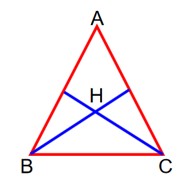Maths
Get insights from 6.5k questions on Maths, answered by students, alumni, and experts. You may also ask and answer any question you like about Maths
Follow Ask QuestionQuestions
Discussions
Active Users
Followers
New answer posted
2 months agoContributor-Level 10
Let AB
AC
So vertex A = (1, 1)
altitude from B is perpendicular to AC and passing through
orthocentre.
So, BH = x + 2y – 7 = 0
CH = 2x + y – 7 = 0
now solve AB & BH to get B (3, 2) similarly CH and AC to get C (2, 3) so centroid is at (2, 2)
New answer posted
2 months agoContributor-Level 10
Line to the normal
->3p + 2q – 1 = 0
lies in the plane 2p + q = 8
From here p = 15, q = -22
Equation of plane 15x – 22y + z – 5 = 0
Distance from origin =
New answer posted
2 months agoContributor-Level 10
Tangents making angle with y = 3x + 5.
So, these tangents are ![]()
New answer posted
2 months agoTaking an Exam? Selecting a College?
Get authentic answers from experts, students and alumni that you won't find anywhere else
Sign Up on ShikshaOn Shiksha, get access to
- 65k Colleges
- 1.2k Exams
- 679k Reviews
- 1800k Answers


